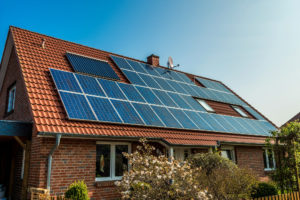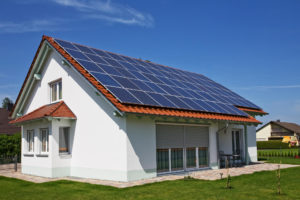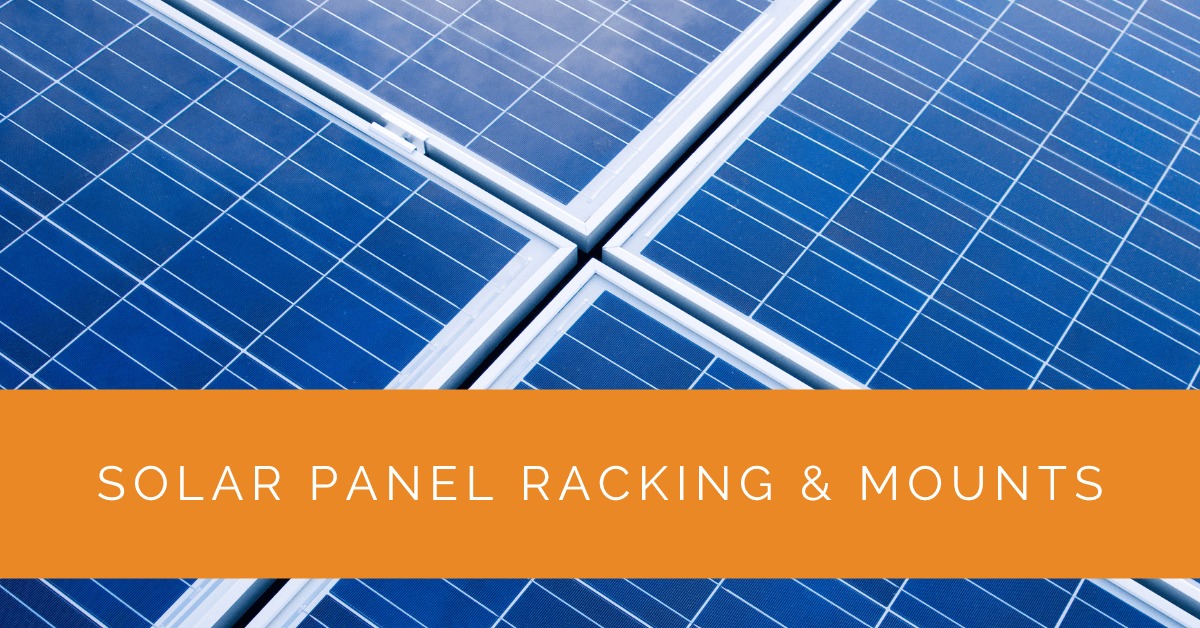Installing solar panels is a significant investment that requires careful consideration of various factors to ensure optimal performance and longevity. One critical aspect often overlooked is selecting and installing the right racking and mounting systems. These systems provide the necessary support, alignment, and stability for your solar panels, ultimately impacting their energy generation capacity. This comprehensive guide will delve into the world of solar panel racking and mounts, exploring different types, installation techniques, key components, and maintenance practices. By understanding these crucial elements, you will be equipped with the knowledge needed to make informed decisions and maximize the potential of your solar system. So, let’s embark on this journey to discover how to choose, install, and maintain the ideal racking and mounting solutions for your solar panels.
Contents
- 1 Key Takeaways
- 2 Understanding Solar Panel Mounting Systems
- 3 Key Components of Solar Panel Mounting Systems
- 4 Choosing the Right Solar Panel Racking System
- 5 Installation and Maintenance of Solar Panel Racking & Mounts
- 6 Case Study: Optimizing Solar Panel Installation with Advanced Racking and Mounting Solutions
- 7 Expert Insights From Our Solar Panel Installers About Solar Panel Racking & Mounts
- 8 Experience Solar Excellence with Us!
- 9 Conclusion
Key Takeaways
- Choosing the right solar panel racking and mounting system is crucial for maximizing energy production and ensuring system stability.
- Proper installation techniques, including secure mounting and alignment, are essential to optimize the performance and longevity of your solar panel system.
- Regular maintenance practices such as inspections, cleaning, and tightening connections contribute to the efficiency and reliability of the racking and mounting solutions.
Understanding Solar Panel Mounting Systems
Roof-Mount Solar Panel Racking Systems
Roof-mounted systems are popular for residential solar panel installations, as they utilize the existing space on rooftops. The suitability of a roof for solar panel installation largely depends on its types, such as shingle, metal, tile, or flat roofs. Different racking options accommodate various roof types, including flush, tilt, and ballasted mounts.
- Flush Mounts: Flush mounts involve directly attaching solar panels to the roof surface. This sleek and low-profile installation method is commonly used for shingle and tile roofs. It ensures a secure attachment while maintaining an aesthetically pleasing appearance.
- Tilt Mounts: Tilt mounts allow for an adjustable tilt angle of the solar panels, optimizing their exposure to sunlight throughout the day. This flexibility enhances energy generation, especially during seasons with lower sun angles. Tilt mounts are often used for metal and flat roofs.
- Ballasted Mounts: Ballasted mounts rely on weighted components to secure solar panels without penetrating the roof surface. This installation method is ideal for flat roofs or drilling into the roof is not preferred. Ballasted mounts provide stability against high winds and offer easy maintenance access.
Ground-Mount Solar Panel Racking Systems
Ground-mounted systems are an alternative option when rooftop space is limited or unsuitable for solar panel installation. These systems are installed on the ground using racks and supports designed to withstand environmental conditions and optimize sun exposure. Ground mounts are commonly categorized into fixed-tilt, single-axis, and dual-axis tracking systems.
- Fixed Tilt: Fixed tilt systems position solar panels at a fixed angle that maximizes sunlight exposure throughout the day. This type of ground mount is more straightforward to install and requires minimal maintenance.
- Single-Axis Tracking: Single-axis tracking systems allow solar panels to follow the sun’s movement along one axis, typically from east to west. By continuously adjusting the panels’ angle, they can capture sunlight more effectively, increasing energy production.
- Dual-Axis Tracking: Dual-axis tracking systems offer the highest level of sun-tracking precision by allowing solar panels to move along horizontal and vertical axes. This advanced technology ensures panels are always perpendicular to the sun’s rays, optimizing energy output. However, dual-axis systems tend to be more expensive and require regular maintenance.

Key Components of Solar Panel Mounting Systems
Solar panel mounting systems have several essential components that work together to ensure stability, durability, and efficient energy generation. Let’s explore the key components involved in both roof-mounted and ground-mounted systems:
- Rails: Rails form the backbone of the mounting system, providing the framework for attaching solar panels. They are typically made of durable and corrosion-resistant aluminum or stainless steel. Rails are available in various lengths and profiles to accommodate different panel sizes and installation configurations.
- Clamps: Clamps securely hold the solar panels in place on the rails. These adjustable components are designed to fit specific panel dimensions and thicknesses. Clamps should provide a tight grip without damaging the panels’ frames, ensuring they remain firmly attached even in high winds or extreme weather conditions.
- Brackets: Brackets connect the rails to the roof or ground mounts. These sturdy metal components provide structural support and distribute the weight of the panels evenly. It’s crucial to select brackets that are compatible with your specific roof type or ground mount system to ensure a secure and reliable installation.
- Mounting Brackets: Mounting brackets are specific to roof-mounted systems and allow for secure attachment to different roof types. These brackets must be designed to withstand the weight of the panels and the forces exerted by wind, snow, or other environmental factors. Depending on the roof material, specific brackets, and attachment methods may be required, such as flashing and sealing for waterproofing.
- Ground Mounting Hardware: Ground-mounted systems require robust mounting hardware, including anchors, posts, and foundations. The selection of ground mounting hardware depends on factors such as soil conditions, wind loads, and the desired tilt angle for the panels. Proper foundation and anchoring ensure stability and prevent shifting over time.
- Racking System Accessories: Other accessories, such as grounding equipment, wire management clips, and cable trays, contribute to the overall functionality and safety of the racking system. Grounding components help to protect against electrical surges and ensure proper system grounding, while wire management accessories help organize and protect the wiring connecting the panels to the inverter.
Choosing high-quality components compatible with your specific solar panel system and installation requirements is essential. Consulting with professionals or experienced solar installers can help you select the right components and ensure a successful and durable mounting solution.
Choosing the Right Solar Panel Racking System
Selecting the appropriate racking system for your solar panel installation is a crucial step in maximizing the efficiency and longevity of your system. Several factors should be considered during the decision-making process:
- Roof Type: Assess the type of roof you have, whether it’s shingle, metal, tile, or flat. Different racking options are available for each roof type, and choosing a compatible and structurally sound system is important.
- Environmental Factors: Consider the local climate, including wind speeds, snow loads, and the potential for extreme weather events. The racking system should be designed to withstand these conditions and provide the necessary stability and protection for your solar panels.
- Regulatory Compliance: Familiarize yourself with local building codes, permits, and regulations related to solar panel installations. Some areas may have specific requirements for racking systems, such as fire ratings or wind resistance certifications. Ensure that the chosen system meets all necessary compliance standards.
- System Size and Expansion: Determine the size of your solar panel system and any plans for future expansion. The racking system should accommodate the number of panels you currently have and allow for easy scalability if you decide to increase your system’s capacity.
- Budget: Consider your budget constraints when selecting a racking system. While investing in high-quality components is important, options are available at various price points. Balance the cost with the desired performance and durability to find the best solution for your project.
By carefully considering these factors and consulting with experts, you can choose a solar panel racking system best suited to your specific project requirements.

Installation and Maintenance of Solar Panel Racking & Mounts
Proper installation and regular maintenance practices are essential to ensure the long-term performance and durability of your solar panel racking and mounts. Here are some guidelines to follow:
Installation Process
- Site Assessment: Before beginning the installation, conduct a thorough assessment of the installation site. Ensure that the roof or ground is structurally sound and can support the weight of the panels and racking system. Check for any potential shading issues caused by nearby trees or buildings for roof-mounted systems.
- Proper Placement: Carefully plan the placement of the solar panels to maximize sunlight exposure throughout the day. Consider factors such as the orientation, tilt angle, and potential obstructions. Follow the manufacturer’s guidelines and local regulations for panel spacing and clearances.
- Secure Mounting: Install the racking system according to the manufacturer’s instructions, ensuring all components are securely fastened. Pay attention to proper attachment methods for different roof types, such as using flashing and sealants for waterproofing.
- Electrical Connections: Properly wire the solar panels, following the wiring diagram provided by the manufacturer. Adhere to electrical codes and safety standards to ensure a safe and efficient electrical connection.
- Ground-Mount Foundations: For ground-mounted systems, ensure that the foundations, posts, and anchors are installed correctly. Follow the manufacturer’s specifications and consider soil conditions, local climate, and wind loads to ensure stability.
- Quality Check: Once the installation is complete, perform a comprehensive quality check to ensure all components are securely fastened, panels are aligned properly, and wiring connections are tight and secure.
Maintenance Practices
- Regular Inspection: Periodically inspect the racking system and mounts to check for any signs of damage, such as loose clamps, bent rails, or degraded components. Look for any potential issues that may compromise the stability or performance of the system.
- Cleaning: Keep the solar panels and racking system clean to maintain optimal energy production. Remove any debris, leaves, or dirt that may accumulate on the panels or obstruct sunlight. Follow the manufacturer’s guidelines for cleaning and avoid using abrasive materials that may scratch the panels.
- Snow Removal: In areas with heavy snowfall, removing snow from the solar panels may be necessary to ensure their effectiveness. Use a soft brush or snow removal tools specifically designed for solar panels to avoid causing damage.
- Tighten Connections: Regularly check and tighten any loose connections, such as clamps or brackets, to maintain the stability of the racking system. Be cautious not to overtighten, as it may damage the panels or components.
- Professional Maintenance: Consider scheduling professional inspections and maintenance visits to ensure that your solar panel racking and mounts are in optimal condition. Professionals can identify potential issues and provide expert guidance on maintenance and repairs.
By following these installation and maintenance practices, you can ensure your solar panel racking and mounts’ long-term performance, safety, and durability.
Case Study: Optimizing Solar Panel Installation with Advanced Racking and Mounting Solutions
Background
At Solar Panels Network USA, we were approached by a residential client looking to optimize their solar panel system’s efficiency and longevity. The client had recently purchased a property with a flat roof, and they were keen on maximizing energy production through advanced racking and mounting solutions.
Project Overview
The client’s primary goal was to install a robust solar panel system that could withstand local weather conditions and provide sustainable energy for their household. They sought our expertise in selecting and installing the most suitable racking and mounting systems for their flat roof.
Implementation
Assessing Roof Suitability and Environmental Factors
We began by conducting a thorough site assessment to evaluate the roof’s structural integrity and identify potential shading issues. Understanding the importance of contextual connections, we considered the roof’s orientation, local climate, and potential for extreme weather events.
Selecting the Right Racking System
Given the flat roof and environmental factors, we recommended a ballasted mount system. This system’s attributes, such as stability and ease of maintenance, made it an ideal choice. The ballasted mounts provided secure anchoring without penetrating the roof surface, preserving its integrity.
Planning and Installation
We meticulously planned the layout and positioning of the solar panels to optimize sunlight exposure. By leveraging our knowledge domain and entity type expertise, we selected high-quality rails, clamps, and brackets designed to withstand local wind loads and environmental conditions. The contextual bridge between the roof type and mounting system ensured a seamless integration.
Ensuring Proper Alignment and Stability
During installation, we paid close attention to the alignment of the panels, securing them with precision to ensure maximum efficiency. We utilized semantic SEO principles to maintain a balance between the weight distribution and the roof’s load-bearing capacity, ensuring a stable and durable setup.
Results
The implementation of the ballasted mount system on the client’s flat roof resulted in a significant increase in energy production. The secure attachment and optimal alignment of the panels contributed to enhanced efficiency and reliability. The client reported a notable reduction in their energy bills and expressed satisfaction with the system’s performance.
Summary
Our experience with this project highlights the importance of selecting the right racking and mounting systems for solar panel installations. By considering roof suitability, environmental factors, and employing precise installation techniques, we were able to optimize the system’s performance and ensure long-term durability. At Solar Panels Network USA, we are committed to providing tailored solutions that meet our clients’ unique needs, contributing to a sustainable and energy-efficient future.
Expert Insights From Our Solar Panel Installers About Solar Panel Racking & Mounts
Proper racking and mounting are crucial for the efficiency and longevity of your solar panel system. Ensuring secure attachment and alignment can significantly boost energy production.
Senior Solar Installer
Choosing the right mounting system depends heavily on your roof type and local environmental conditions. It’s essential to consult with professionals to select the most suitable and durable option.
Solar Installation Specialist
Regular maintenance of your racking and mounting systems, such as inspecting and tightening connections, can prevent potential issues and ensure your solar panels operate at peak performance.
Lead Solar Technician
Experience Solar Excellence with Us!
Trust in Solar Panels Network USA, where our seasoned experts deliver top-quality solar solutions for homes and businesses nationwide. With a legacy of countless successful installations and a commitment to sustainable energy, we’re your reliable partner in the solar journey. Ready for a brighter, eco-friendly future? Call us now at (855) 427-0058 and harness the power of the sun!
Conclusion
Selecting the right solar panel racking and mounting system is crucial for maximizing energy production, ensuring system stability, and prolonging the lifespan of your solar panel system. Whether you choose a roof-mounted or ground-mounted solution, carefully consider factors such as roof type, environmental conditions, and regulatory compliance to make an informed decision.
During installation, follow the manufacturer’s guidelines, adhere to local regulations, and prioritize proper placement and secure mounting. Regular maintenance, including inspections, cleaning, and tightening of connections, will help maintain the system’s efficiency and reliability over time.
Remember, consulting with professionals or experienced solar installers can provide valuable insights and guidance throughout the process. By investing in high-quality racking and mounting solutions and following best practices, you can optimize the performance of your solar panel system and contribute to a greener and more sustainable future.
About the Author
Solar Panels Network USA stands at the forefront of solar energy solutions, driven by a team of seasoned solar engineers and energy consultants. With over decades of experience in delivering high-quality solar installations and maintenance, we are committed to promoting sustainable energy through customer-centric, tailored solutions. Our articles reflect this commitment, crafted collaboratively by experts to provide accurate, up-to-date insights into solar technology, ensuring our readers are well-informed and empowered in their solar energy decisions.

